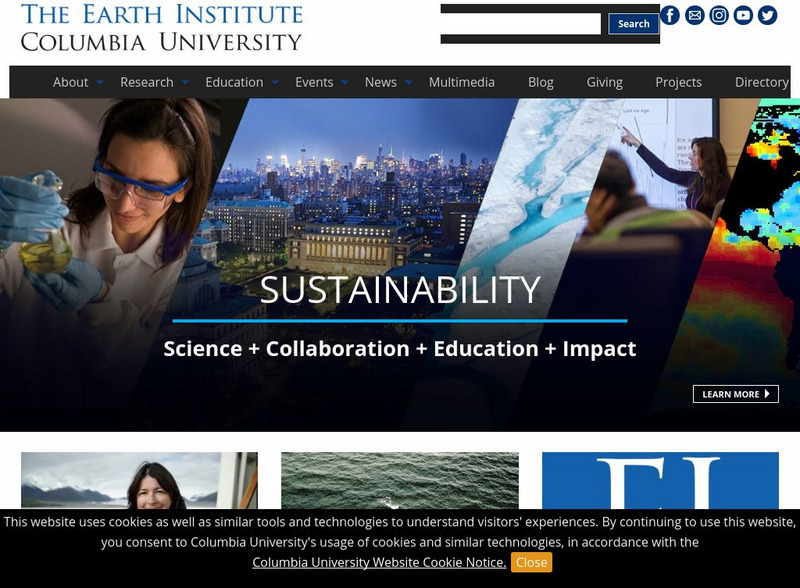Curated OER
Weather & other Natural Disasters
In this science worksheet, students find the vocabulary that links the concepts of weather and natural disasters. The answers are found by clicking the link at the bottom of the page.
Curated OER
Natural Disaster Risk at Home
Students analyze the natural disater threat and potential mitigation techniques of their (parents?) home. They apply classroom knowledge to students, non-academic daily life. Students recongize how earth processes specifically affect...
Curated OER
The Humanitarian Side of Architecture
Students explore the role that architects play in rebuilding communities after natural disasters. They investigate the aftermath of the 1906 California earthquake and fires, and current day efforts to rebuild communities after natural...
Curated OER
Natural Disasters
Students read and discuss the article "Succession" by Bill Freedman. They create a labeled sketch of each type of ecological succession from its beginning to its climax community. Students create an article about a natural disaster as if...
Curated OER
Living With Risk: The Human Element of Natural Disasters
Seventh graders research the Internet and the given websites to complete this activity. In this investigating natural disasters activity students complete several activities about natural disasters.
Curated OER
Living With Disaster
Third graders identify and interpret natural disasters and act as experts to determine where the best location for a new farm would be. Students conduct research on an issue given as it relates to their area of expertise. Students...
Curated OER
Get on the Hurricane Track...Prepare Yourself!
Pupils research hurricanes. Students explore the stages of hurricanes, the Weather Forecasting Center, and tracking of hurricanes. They analyze information and produce a public service announcement educating the public on hurricane...
Burke Museum
Burke Museum: The Big One
This is the introduction to the Burke Museum's online exhibit on earthquakes and natural disasters. This is part of the Burke Museum's collection of geology. Topics that are covered include an introduction to quakes, quake science, quake...
Burke Museum
Burke Museum: Tsunamis
The information on tsunamis provided at this site is part of the Burke Museum's online exhibition on earthquakes and geology. Prevention is discussed, along with famous tsunamis in history.
eSchool Today
E School Today: Your Cool Facts and Tips on Earthquakes
Explains what earthquakes are, what causes them, the different types, tsunamis that can be caused by them, and how to prepare if living in an earthquake-prone area.
Woods Hole Oceanographic Institution
Woods Hole Oceanographic Institution: Tsunami: An Interactive Guide
A complete, interactive learning activity covering the science of tsunamis, preparedness, research, and historical tsunamis. Excellent animations and real, historical recordings of survivors allow the learner to experience what happens...
NOAA
Noaa: National Weather Service: Nature's Most Violent Storms
Scroll through a preparedness guide to know how to be ready in case disaster occurs.
Other
Rising From Ruin
This interactive feature reports on devastation caused after Hurricane Katrina. It includes diaries, towns that were affected and virtual tours. This is a great source for learning how this disaster affected residents of the southern U.S.
PBS
Pbs: Are the World's Weather and Climate Changing?
What's going on with our weather? Learn about it in this lesson plan that examines the climate and weather patterns in the world today. It has a weather quiz and guidelines that help the young scholars understand weather changes...
TeachEngineering
Teach Engineering: Mini Landslide
Students explore how different materials (sand, gravel, lava rock) with different water contents on different slopes result in landslides of different severity. They measure the severity by how far the landslide debris extends into model...
TeachEngineering
Teach Engineering: Floodplain Modeling
Students explore the impact of changing river volumes and different floodplain terrain in experimental trials with table top-sized riverbed models. The models are made using modeling clay in aluminum baking pans placed on a slight...
TeachEngineering
Teach Engineering: Natural Disasters
Students are introduced to our planet's structure and its dynamic system of natural forces through an examination of the natural hazards of earthquakes, volcanoes, landslides, tsunamis, floods and tornados, as well as avalanches, fires,...
TeachEngineering
Teach Engineering: Hurricanes
Students learn what causes hurricanes and what engineers do to help protect people from destruction caused by hurricane winds and rain. Research and data collection vessels allow for scientists and engineers to model and predict weather...
NASA
Nasa Earth Observatory: Natural Hazards: Floods
NASA's Earth Observatory offers photos of floods all over the globe. Examine these as you read about the causes and often devastating effects of these natural disasters.
US Geological Survey
Us Geological Survey: Earthquake Hazards
Find out about earthquake hazards and damage. Some of the topics are an introduction to hazards, hazard maps, soil types and damage, and recent damage caused by earthquakes.
Other
San Francisco Department of Emergency Management: 72 Hours: Are You Prepared?
Are you prepared for a major disaster or emergency? Would you know what to do until you could get help? Find out how to prepare yourself ahead of time by building an emergency supply kit and also what to do in a specific disaster such as...
Centers for Disease Control and Prevention
Centers for Disease Control: u.s. Department of Health: Helping Hands [Pdf]
A comprehensive approach to aid students in their awareness of what occurs during a natural disaster. Focuses on the health issues that threaten a community as well as the agencies that respond to the crisis.
TeachEngineering
Teach Engineering: Survive That Tsunami!
Students use a table-top-sized tsunami generator to observe the formation and devastation of a tsunami. They see how a tsunami moves across the ocean and what happens when it reaches the continental shelf. Students make villages of model...
Columbia University
The Earth Institute at Columbia University
Bringing people together to discuss Earth's environmental problems, The Earth Institute addresses climate change, environmental degradation, poverty, disease, and sustainable use of resources.










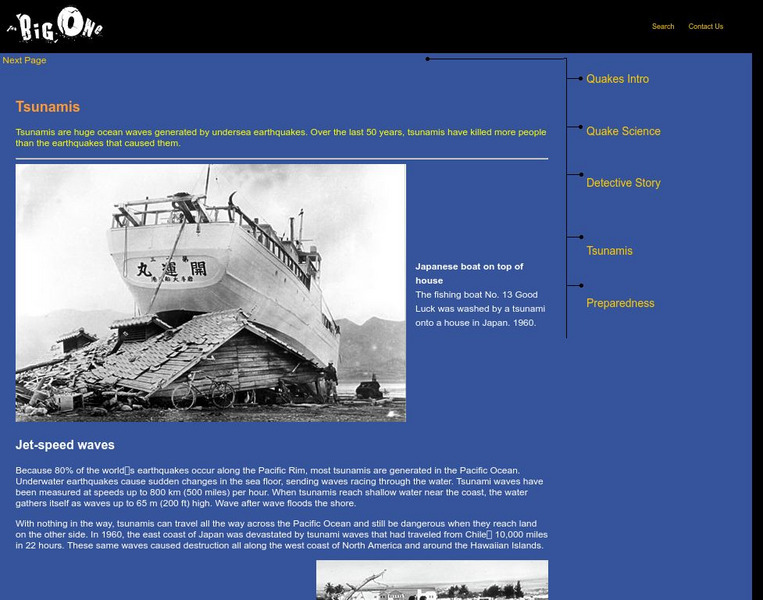




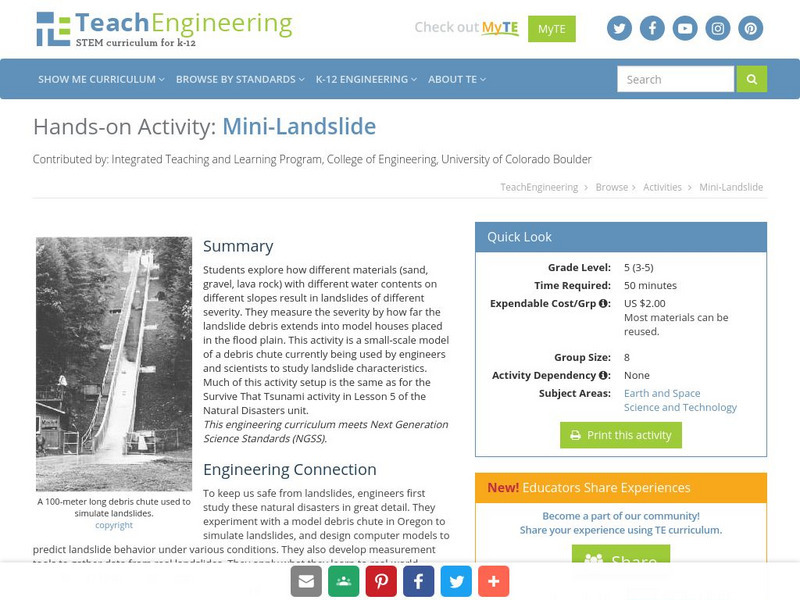
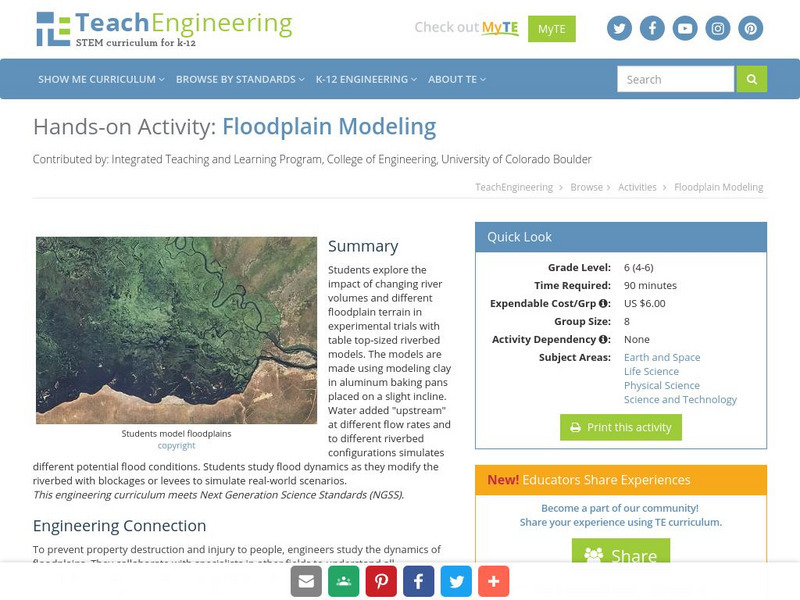
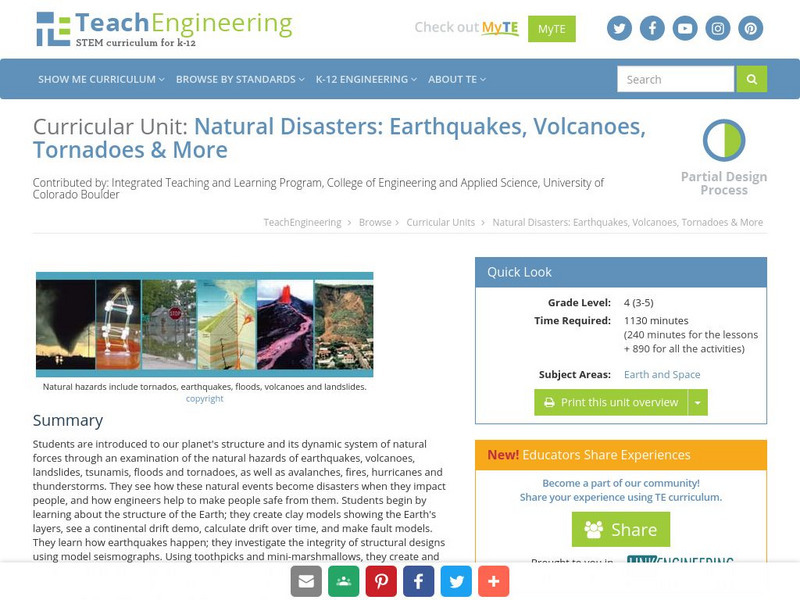

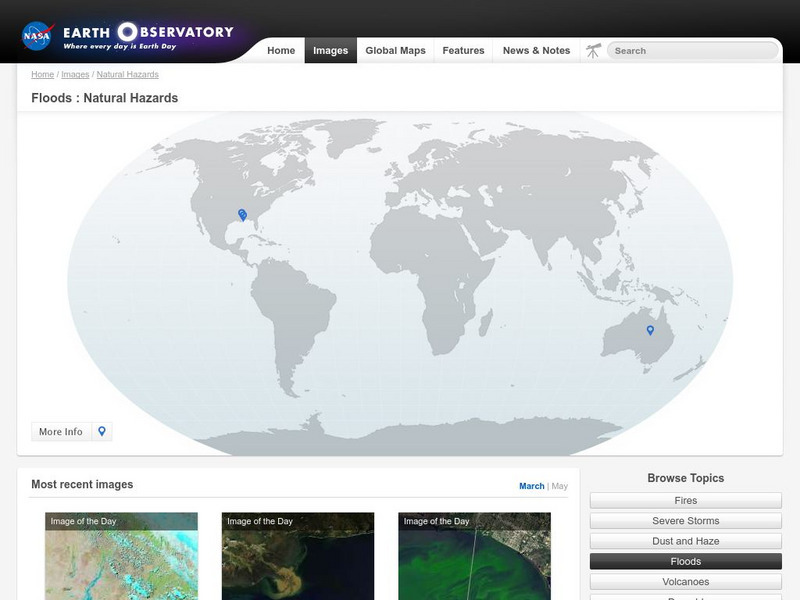
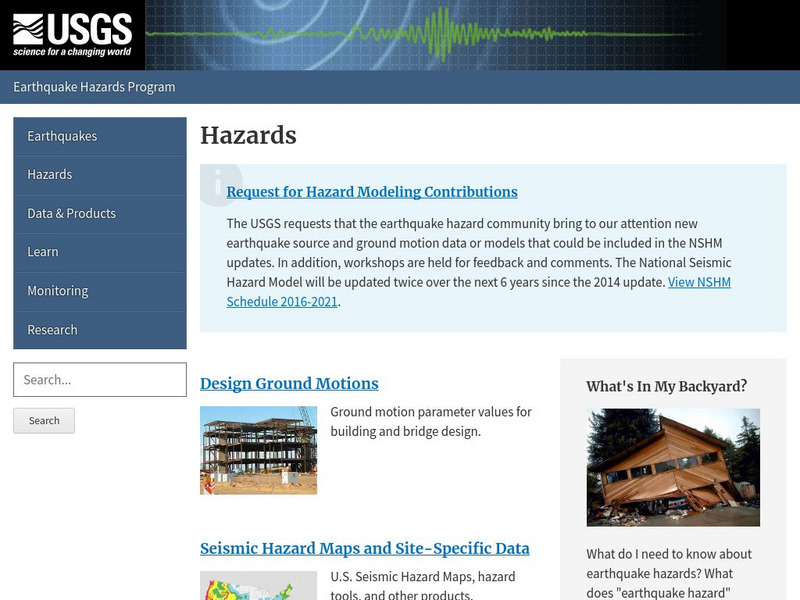
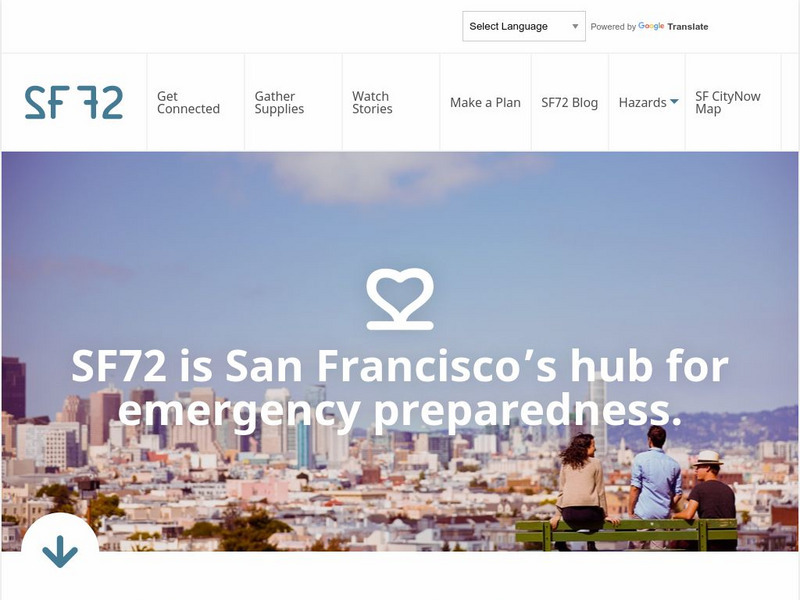
![Centers for Disease Control: u.s. Department of Health: Helping Hands [Pdf] Lesson Plan Centers for Disease Control: u.s. Department of Health: Helping Hands [Pdf] Lesson Plan](http://content.lessonplanet.com/resources/thumbnails/410145/large/bwluav9tywdpy2symdiwmduymc0yoda1my10yzbjowmuanbn.jpg?1589985579)

